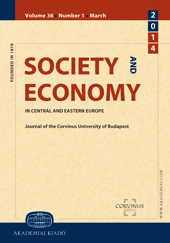Using the stated preference method for the calculation of social discount rate
Using the stated preference method for the calculation of social discount rate
Author(s): Andrea TabiSubject(s): National Economy, Economic policy, Methodology and research technology, Public Finances
Published by: Akadémiai Kiadó
Keywords: social discount rate; stated preferences; revealed preferences; cost-benefit analysis;
Summary/Abstract: The aim of this paper is to build the stated preference method into the social discount rate methodology. The first part of the paper presents the results of a survey about stated time preferences through pair-choice decision situations for various topics and time horizons. It is assumed that stated time preferences differ from calculated time preferences and that the extent of stated rates depends on the time period, and on how much respondents are financially and emotionally involved in the transactions. A significant question remains: how can the gap between the calculation and the results of surveys be resolved, and how can the real time preferences of individuals be interpreted using a social time preference rate. The second part of the paper estimates the social time preference rate for Hungary using the results of the survey, while paying special attention to the pure time preference component. The results suggest that the current method of calculation of the pure time preference rate does not reflect the real attitudes of individuals towards future generations.
Journal: Society and Economy. In Central and Eastern Europe ǀ Journal of the Corvinus University of Budapest
- Issue Year: 35/2013
- Issue No: 2
- Page Range: 167-186
- Page Count: 20
- Language: English

